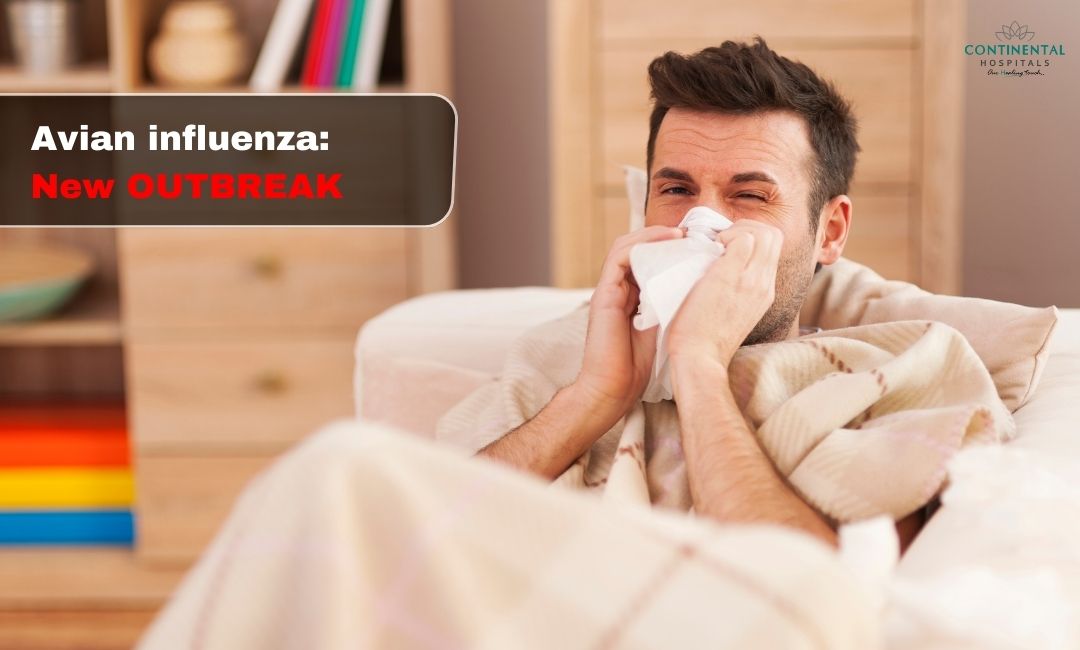Avian influenza, commonly known as bird flu, is a highly contagious viral infection that primarily affects birds. However, certain strains of the virus can also infect humans and other animals, posing significant public health concerns. In recent years, outbreaks of avian influenza have raised alarms worldwide due to their potential to cause severe illness, economic losses, and even fatalities. In this blog post, we'll delve into the causes, symptoms, prevention strategies, and global impact of avian influenza.
Global Presence: Avian influenza viruses are endemic in wild birds worldwide, with outbreaks occurring regularly in various regions.
Economic Impact: HPAI outbreaks can have devastating consequences for the poultry industry, leading to mass culling of infected flocks and significant economic losses. According to the World Organization for Animal Health (OIE), the 2021-2022 HPAI outbreaks resulted in the culling of over 200 million birds globally.
Public Health Risk: While the risk of bird flu transmission to humans is relatively low, it's not nonexistent. Since 2003, the World Health Organization (WHO) has reported over 860 human cases of H5N1 infection, with over 450 fatalities.
Causes of Avian Influenza:
Avian influenza is caused by influenza A viruses, which belong to the Orthomyxoviridae family. These viruses naturally circulate among wild birds, particularly waterfowl such as ducks and geese, without causing significant illness. However, they can be transmitted to domestic poultry, where they may cause severe outbreaks with high mortality rates. The transmission of avian influenza viruses between birds can occur through direct contact with infected birds, contaminated surfaces, or through the air via respiratory secretions.
Strains of Avian Influenza:
There are many different strains of avian influenza viruses, classified based on the combination of two proteins on the surface of the virus: hemagglutinin (H) and neuraminidase (N). Some strains, such as H5N1, H7N9, and H9N2, have caused outbreaks in poultry and have occasionally infected humans, leading to severe respiratory illness and, in some cases, death. The ability of these viruses to mutate and reassort with other influenza viruses further complicates efforts to control outbreaks and prevent pandemics.
🥗 Healthy Plate Challenge
🍽 Add Your Favorite Dish
Pick Your 6 favorite foods, eat, and see the results.Drag & drop foods onto your plate.
Drop Food Here
Symptoms of Avian Influenza in Birds:
In birds, symptoms of avian influenza can vary depending on the strain of the virus and the species affected. However, common signs of infection may include:
- Sudden death without preceding signs of illness.
- Severe respiratory distress, including coughing, sneezing, and nasal discharge.
- Decreased egg production or changes in egg quality.
- Swelling and discoloration of the head, wattles, and comb.
- Neurological signs such as tremors, paralysis, and twisted necks.
It's important to note that not all infected birds show clinical signs of illness, making it challenging to detect and control outbreaks, particularly in poultry farms.
Symptoms of Avian Influenza in Humans:
While avian influenza primarily affects birds, certain strains have the potential to infect humans, leading to severe respiratory illness and, in some cases, death. Human cases of avian influenza are often associated with direct or close contact with infected birds or contaminated environments, such as live poultry markets. The symptoms of avian influenza in humans may include:
- Fever
- Cough
- Sore throat
- Muscle aches
- Difficulty breathing
- Pneumonia
- Acute respiratory distress syndrome (ARDS)
In severe cases, avian influenza can progress rapidly and lead to respiratory failure and death, particularly in individuals with underlying health conditions or weakened immune systems.
If you suspect you have been exposed to avian influenza or are experiencing symptoms related to it, it's crucial to consult with a General Physician.
Prevention of Avian Influenza:
Preventing and controlling avian influenza outbreaks requires a multi-faceted approach involving surveillance, biosecurity measures, vaccination, and public health interventions. Key strategies for preventing the spread of avian influenza include:
Biosecurity Measures: Implement strict biosecurity protocols on poultry farms and in live bird markets. This includes controlling access to farms, disinfecting equipment, and ensuring proper hygiene practices for workers.
Surveillance and Monitoring: Regularly monitor poultry flocks for signs of illness, and promptly report any suspected cases of avian influenza to veterinary authorities. Surveillance helps in early detection and containment of outbreaks.
Vaccination: Vaccinating poultry against specific strains of avian influenza can help reduce the spread of the virus. However, vaccination strategies should be carefully planned and monitored to ensure effectiveness.
Quarantine and Movement Restrictions: Implement quarantine measures and restrict the movement of poultry between farms and regions, especially during outbreaks. This helps prevent the spread of the virus to unaffected areas.
Safe Handling and Processing: Ensure proper handling and processing of poultry products to minimize the risk of human exposure to the virus. This includes thorough cooking of poultry meat and eggs to kill any potential viruses.
Public Awareness and Education: Educate poultry farmers, workers, and the general public about the risks associated with avian influenza and the importance of preventive measures such as proper hygiene and reporting of sick birds.
International Cooperation: Foster international cooperation and information sharing to monitor the spread of avian influenza globally and to coordinate response efforts during outbreaks.
Wildlife Management: Implement measures to minimize contact between domestic poultry and wild birds, which can be carriers of avian influenza viruses. This may include habitat management and control measures in areas where wild birds and poultry coexist.
Research and Development: Invest in research to better understand avian influenza viruses, including their transmission dynamics, and to develop improved diagnostic tools, vaccines, and treatments.
Avian influenza poses a complex and ongoing challenge for the global community, requiring coordinated efforts to prevent outbreaks, control transmission, and mitigate the impact on human and animal health. By investing in surveillance, biosecurity measures, vaccination programs, and public health interventions, we can work together to reduce the threat of avian influenza and protect both birds and humans from this potentially devastating disease.
If you suspect you have been exposed to avian influenza or are experiencing symptoms related to it, it's crucial to consult with a General Physician.
Related Blog Articles:
1. Influenza (Flu) in Children
2. Importance of Flu Vaccines: Myth vs. Fact
.webp)














